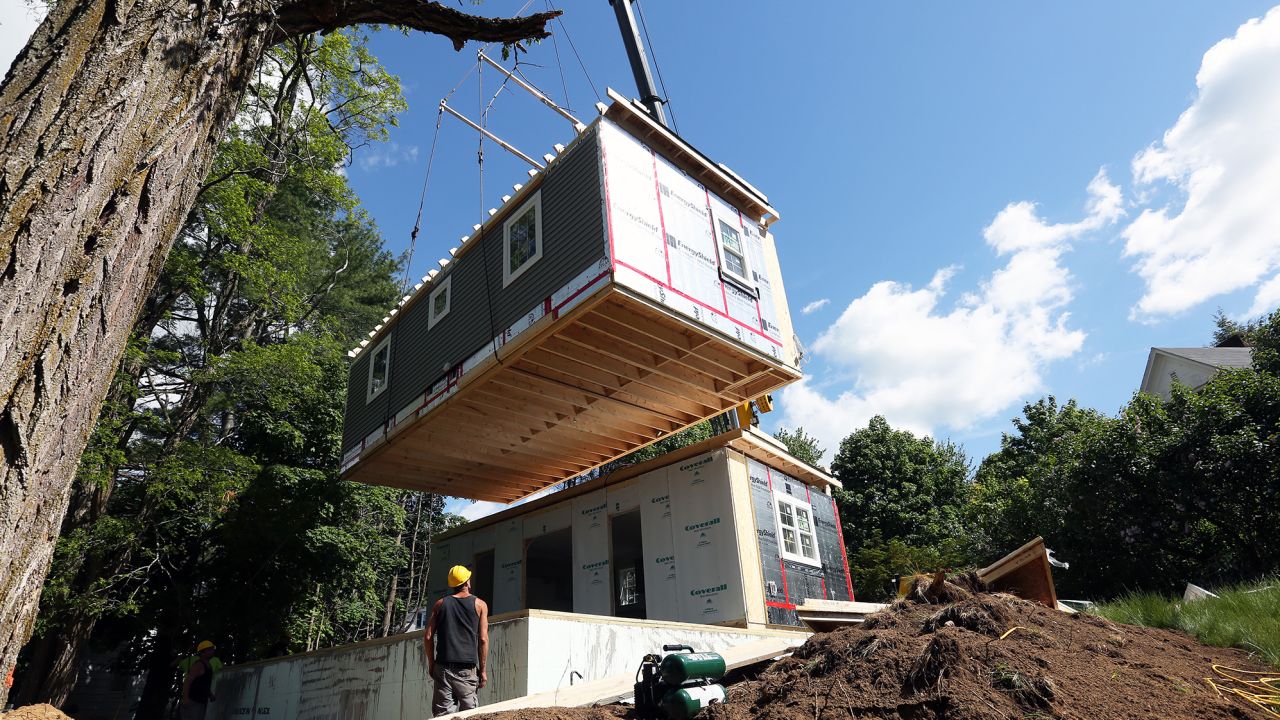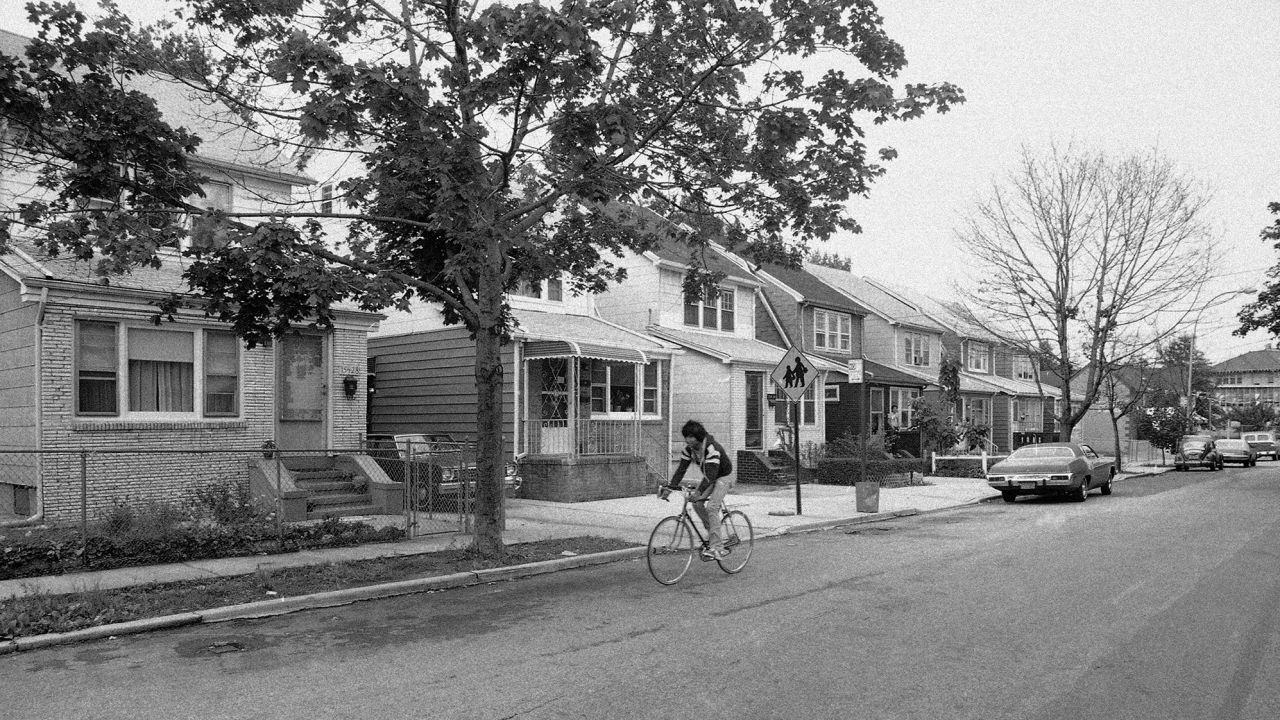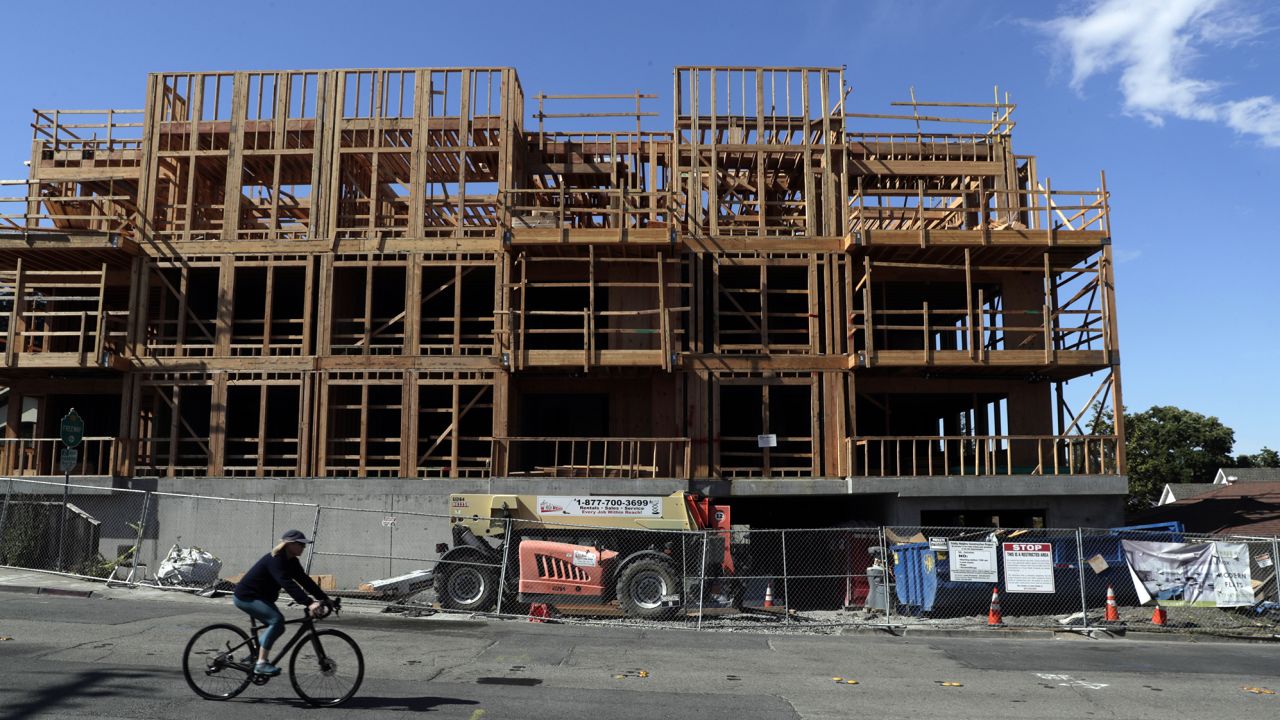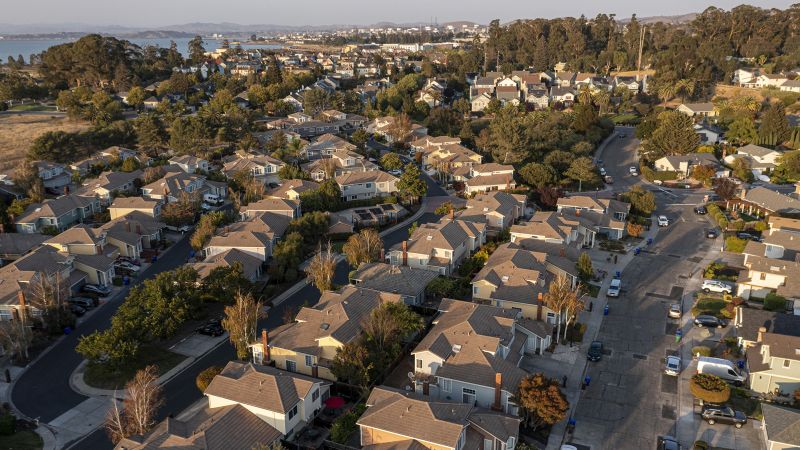New York
CNN
—
In the 1910s, US cities began enacting policies that would shape neighborhoods and, unintentionally, lay the roots for the severe housing shortage today: single-family zoning laws.
Zoning laws, at their most basic, follow a simple concept. In one part of town, only factories can be built. In another section of town, only apartment buildings can be built. And in a different part of town, only single-family houses can be built.
Single-family zoning laws are unknown to most Americans, but they were instrumental to the expansion of urban areas and the suburban ideal of owning a home with a front porch and backyard on a half-acre plot of land post-World War II.
But that dream always had a threat implicit, for those who viewed it that way. Your house could be your dream home, but could that dream come to an end if someone built a factory right next door? And if you tried to sell your house, who would buy it? Any pollution or noise could easily drift over to your house, and selling and moving someplace new could seem nearly impossible.
And thus, zoning laws protected millions of Americans’ home values, stopped development of projects that could turn small villages into larger towns and larger towns into cities, and delegated control to local homeowners and government over how land in their neighborhoods was used.
Yet critics say zoning laws ended up being exclusionary, reinforced racial and class segregation and shut the door to many Americans on home ownership.
Strict single-family zoning regulations limited housing supply, artificially raised prices, squandered the dream of homeownership for future generations, and blocked families from moving into neighborhoods with better schools and job opportunities, researchers and advocates say.
More than a century after the first single-family zoning laws were passed, roughly 75% of land that is zoned for housing in American cities is for private, single-family homes, only. In some suburbs, zoning laws make it illegal to build apartments in nearly all residential areas. Municipalities have also made minimum lot sizes bigger and added height requirements. This has had the effect of encouraging ever-larger single-family homes and limiting housing options, like smaller houses.
“Zoning has gotten more complicated and more restrictive,” said Jenny Schuetz, a senior fellow at Brookings Metro who studies urban economics and housing policy. “It’s getting harder to build stuff, particularly in high-income areas that want to have a lot of control over development.”
Now, more local and state governments — led by both Democrats and Republicans -— are rethinking their single-family zoning laws in response to a nationwide housing crisis.
Homes cost more than they ever have over the past 30 years, even when adjusting for inflation, and housing construction has failed to keep up with demand. The US housing market is short some 6.5 million homes.
So a growing number of states and municipalities are loosening zoning laws once considered untouchable. These “upzone” reforms have been pushed by pro-housing activists — so-called YIMBYs, short for Yes in My Backyard.
Policymakers and advocates are making several changes to increase the housing stock: eliminating single-family zoning laws; legalizing accessory dwelling units, commonly known as granny flats, on single-family zoned areas; legalizing duplexes, triplexes and fourplexes; and enacting reforms to create affordable housing development near major transit lines.

Minneapolis, Arlington, Gainesville, Charlotte, Walla Walla, Washington, and other cities have reformed single-family zoning laws in recent years.
Oregon, California, Washington, Montana and Maine have ended them statewide. President Joe Biden’s administration has also advocated for zoning reform, offering federal grants for communities that alter policies to allow for multi-family developments.
“Zoning seems like a technical topic, but it touches many of the issues Americans care about most deeply,” writes Richard Kahlenberg in his new book “Excluded: How Snob Zoning, Nimbyism, and Class Bias Build the Walls We Don’t See.” Exclusionary zoning “not only blocks the chance of families to live in neighborhoods rich with opportunity but also stacks the deck against working families by making housing in entire metropolitan areas less affordable.”
There is fierce political opposition to zoning reform from some local communities, however. Connecticut, Arizona and New York have attempted zoning changes, but efforts have stalled amid blowback. One New York lawmaker warned of a “suburban uprising” if Gov. Kathy Hochul’s plan to build 800,000 new homes over a decade went through. The plan included changes to zoning laws in suburbs near rail stations.
And, as the results show in cities that did reform zoning laws, there are limits to policy changes.
“You can’t just do it all with zoning reform,” Walla Walla City Manager Elizabeth Chamberlain told CNN. “It’s not a silver bullet.”
Single-family zoning laws haven’t always existed. Cities and towns were allowed to develop naturally, many of which acquired over the years what tourists often call “old world charm.”
And before their introduction in the 1910s, there were few broad laws about where things could be built, in general. Homes would go up next to factories. An apartment building could be built in the middle of a downtown commercial strip.
But single-family zoning laws spread to protect homeowners in residential areas from new industrial developments like warehouses, according to economic historians.
In 1916, eight cities had zoning laws. Twenty years later, more than 1,200 had zoning laws on the books.
The Supreme Court in 1917 banned race-based zoning, ruling that an ordinance in Louisville, Kentucky, was unconstitutional.
But in 1926, the court upheld the constitutionality of single-family zoning laws. In neighborhoods with private homes, apartments can be a “mere parasite,” the court said, and ruin the “character” of the neighborhood, blighting it and lowering property values.
This landmark decision effectively allowed communities to limit higher-density residential development and screen out people who could not afford to buy a home.
The second wave of single-family zoning laws spread during the 1970s, historians say, and the policies became more restrictive.

This was a response to home values becoming a larger portion of Americans’ assets and, in many cases, a way to block low-income and minority workers from gaining greater access to the suburbs after passage of the 1968 Fair Housing Act.
And people began viewing their home not primarily as a place to live, but an expensive investment asset class with habitability as a fringe benefit.
“Housing started to be viewed as a growth stock instead of a blue-chip stock,” said William Fischel, an emeritus professor of economics at Dartmouth University and historian of zoning laws in America. “This made homeowners more inclined to stop development that might have the slightest risk of harming their house or providing competition.”
Environmental legislation enacted during the 1970s also gave private citizens new tools to block developments.
Local governments, which typically manage land-use regulation, became resistant to changing zoning laws for fear of backlash from homeowners. Homeowners wielded huge political influence to block any changes they believed could hurt their property values.
Zoning laws created security for homeowners — an insurance policy to protect their neighborhoods against change that could hurt their property values, Fischel said. But once zoning laws are enacted, they are difficult to change.
“Zoning is designed not to change very much,” he said.
Restrictive zoning has impacted housing supply and affordability.
A 2021 study found that in San Francisco, the “zoning tax” -— the amount land prices are artificially inflated due to restrictive residential zoning laws — was estimated at more than $400,000 per house. In Los Angeles, New York City and Seattle, the zoning tax was up to $200,000, the study found. It reached $80,000 in Chicago, Philadelphia, Portland and Washington, D.C.
So more cities have turned to zoning reform to address the housing shortage.
There is some evidence it’s working.

In Minneapolis, Portland, New Rochelle, New York, and Tysons Corner, Virginia, new zoning rules that allow more housing have helped slow rent growth, according to a study this year by Pew Charitable Trusts. Towns and cities in the same metro areas that did not reform zoning laws generally saw faster rent growth.
But while restrictive zoning laws are a major cause of the housing shortage, reforms alone won’t be enough to solve the problem.
Walla Walla, Washington, was one of the first US cities to eliminate single-family zoning laws in 2018 in response to a housing shortage and lack of affordability.
“We were realizing that a lot of our vacant land was being developed for large single-family homes,” said City Manager Elizabeth Chamberlain. “We wanted diversity in housing types.”
The city allowed construction of cottage homes, duplexes and fourplexes, relaxed standards for accessory dwelling units (ADUs), and created a minimum density requirement.
The reforms have opened up Walla Walla’s housing market, and dozens of duplexes and ADUs have been built. But the changes have had little impact on housing affordability in Walla Walla.
Zoning reforms do little to address the high costs of housing construction and financing, said Yonah Freemark, the research director of the Urban Institute’s Land Use Lab. And they don’t have an immediate impact on the slow process of building houses.
Other policy reforms are necessary to increase housing supply, such as minimum density requirements and changes to enviornmental review and historic preservation laws.
To address the affordability crisis, advocates urge an increase in housing subsidies and strengthened protections for renters from dramatic rent hikes.
“Zoning is key to understanding why housing is so expensive and why we’re not providing housing to folks who need it,” Freemark said. “The reality is it’s an imperfect solution to a complicated problem.”
Sumber: www.cnn.com






